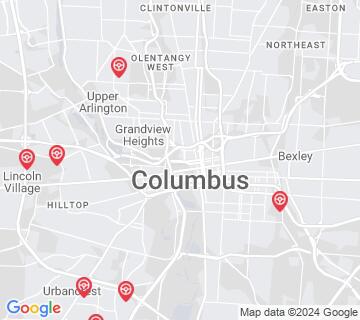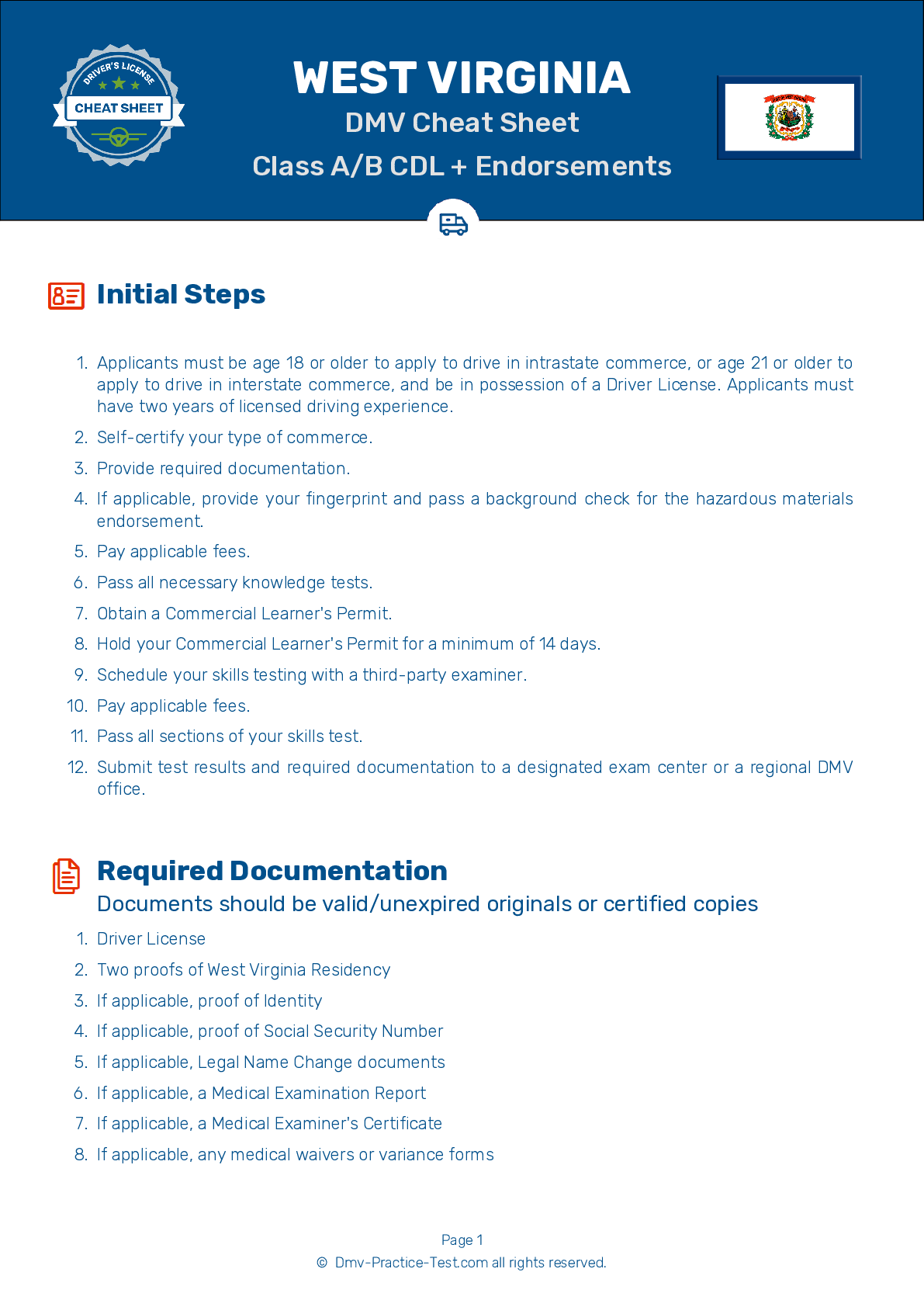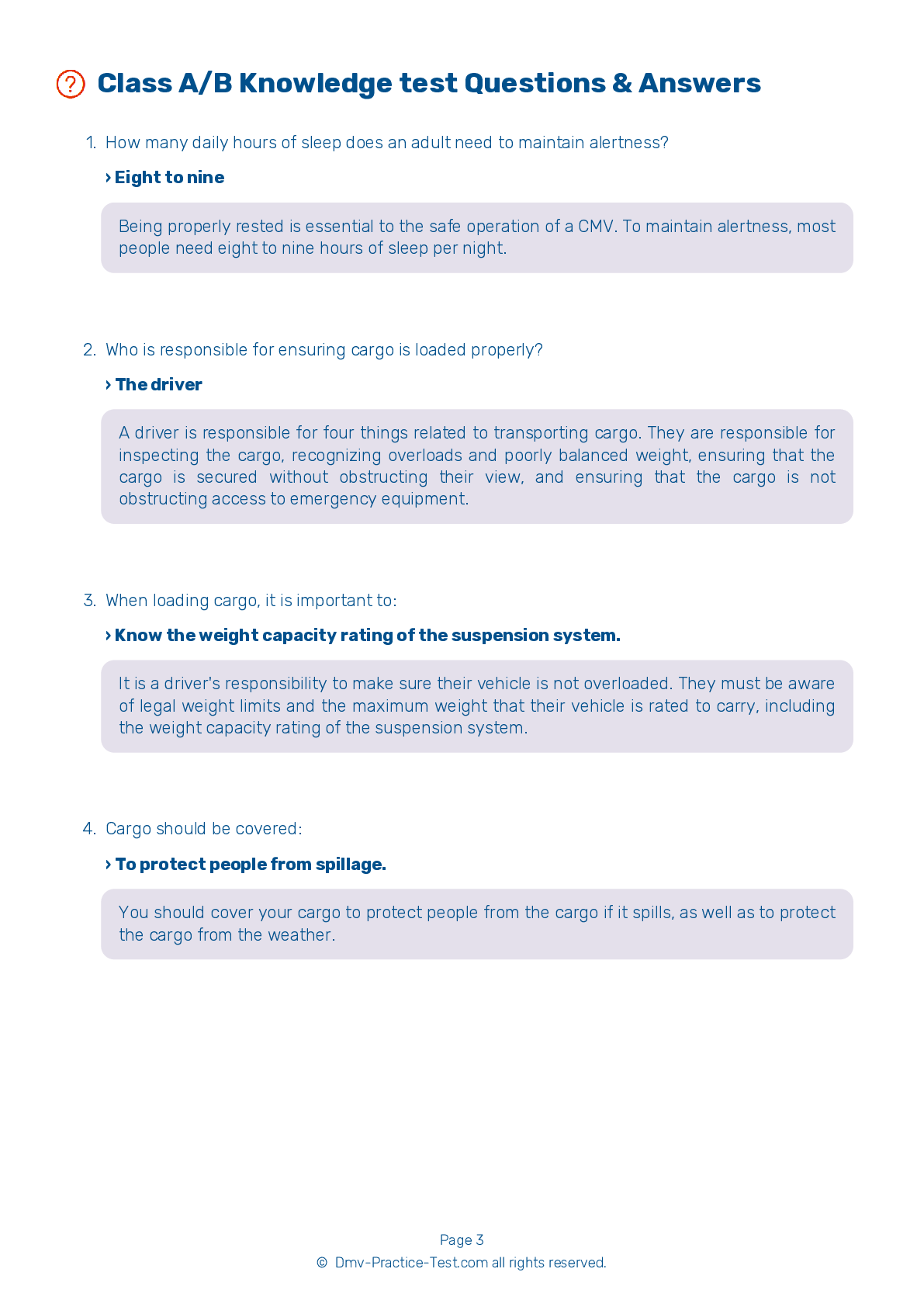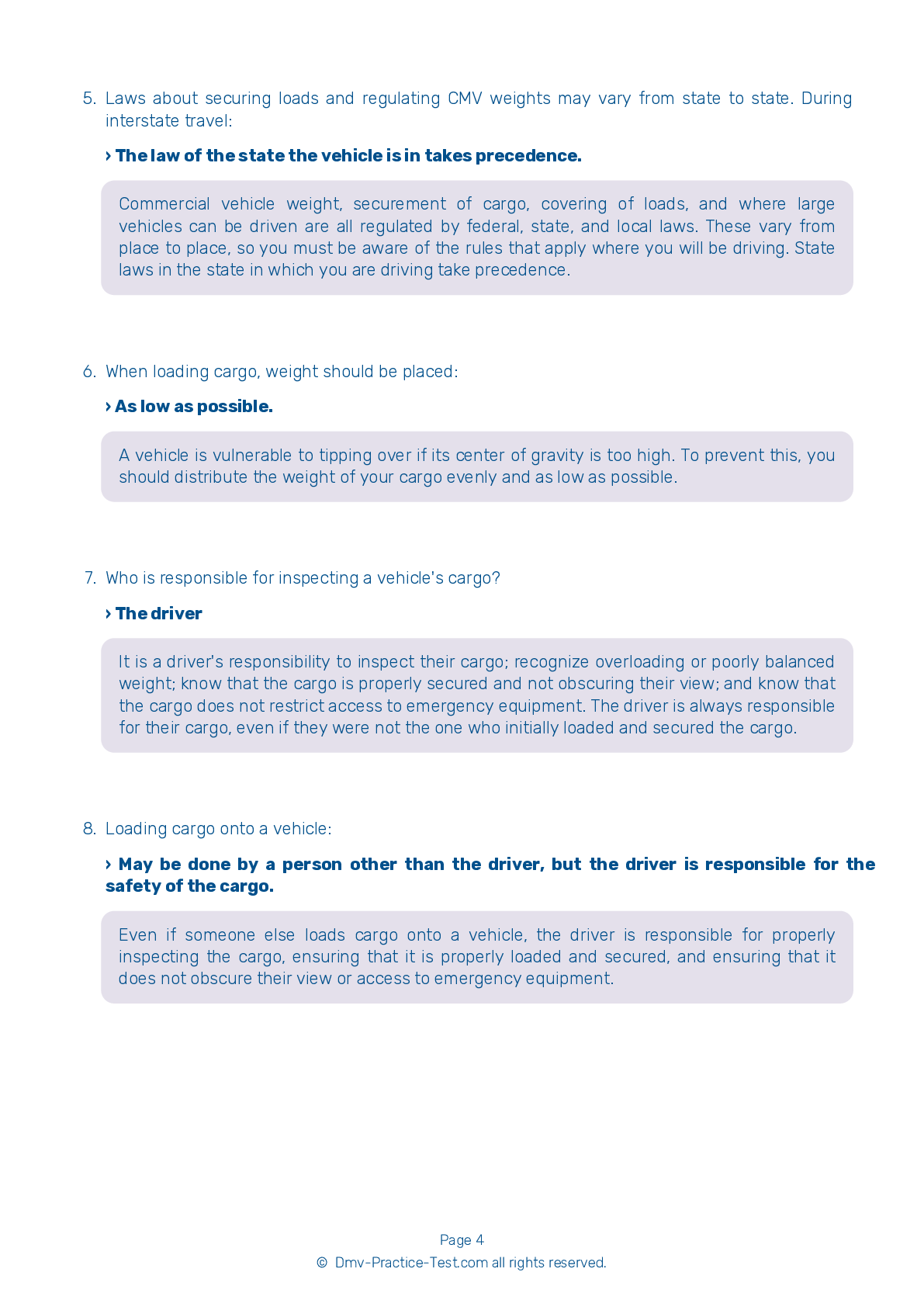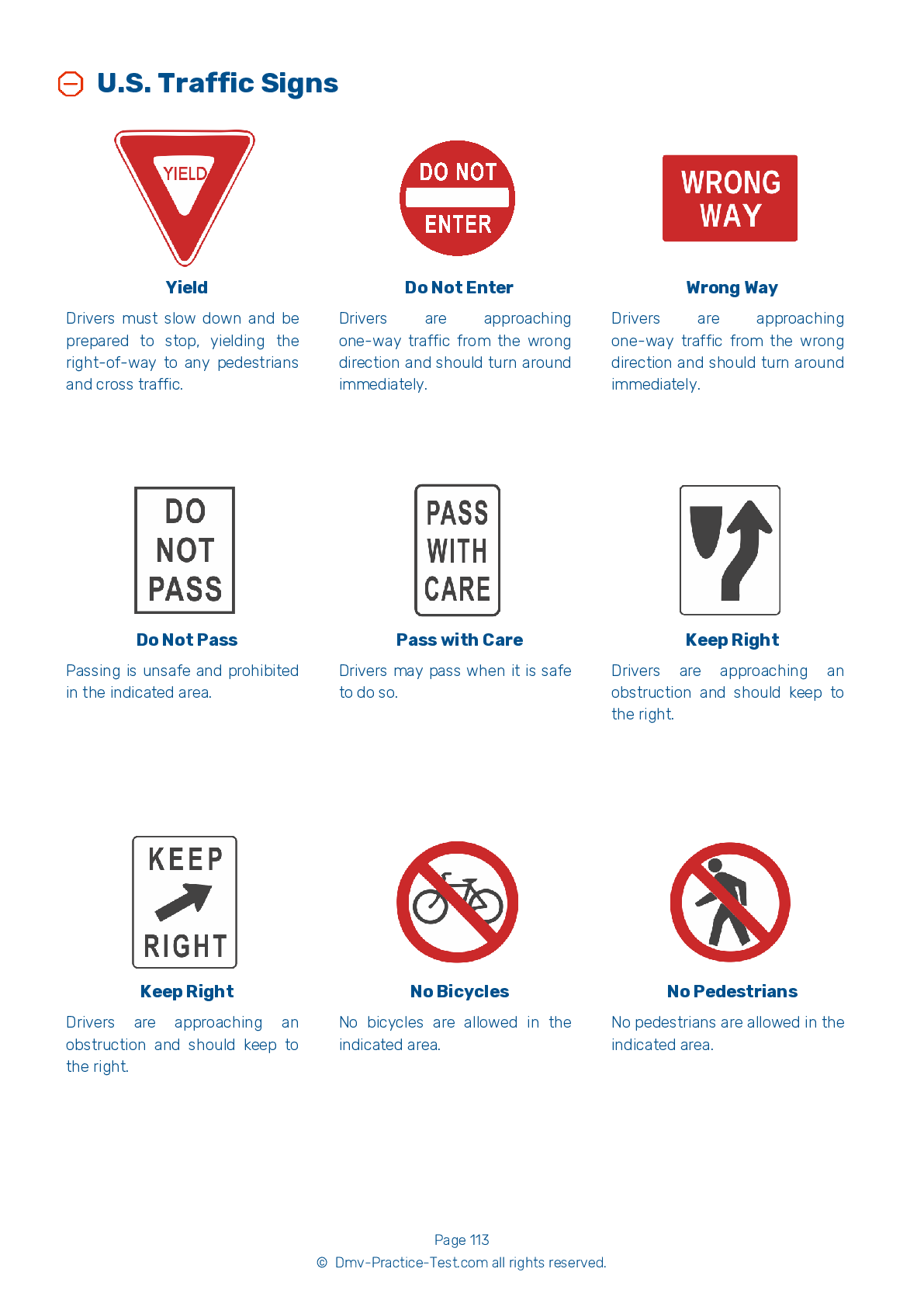Knowledge Test Class A #1
Class A Driving Test | West Virginia 2025 #1
Train for FREE online with our West Virginia class A license test. The official exam test consists of several obligatory parts, with all of them checking your knowledge of different blocks of road rules. If you need to obtain a WV CDL class A permit in 2025, practice as much as possible. Free sample tests published on our website will help you check and improve your knowledge and boost your grades. Please bear in mind that CDL class A requirements may vary from state to state.
50
40
20
1 . Emergency brakes are:
Only required when transporting hazardous materials.
All trucks, truck tractors, and buses must be equipped with emergency brakes and parking brakes.
2 . A dual air brake system:
Has two separate air brake systems, but uses a single set of controls.
A dual air brake system has two separate air brake systems that use a single set of brake controls. One system typically operates the regular brakes on the rear axle or axles. The other system operates the regular brakes on the front axle.
3 . How does doubling your speed from 20 mph to 40 mph affect your vehicle's braking distance?
It quadruples.
Increasing your vehicle's speed will increase your vehicle's striking power and braking distance. Doubling your vehicle's speed from 20 to 40 mph will multiply its braking distance by four.
4 . Which part of the truck is the air compressor connected to?
The door latch
In an air brake system, the air compressor is connected to the engine through gears or a v-belt.
5 . An air brake-equipped vehicle traveling at a speed of 55 mph under ideal driving conditions will need approximately ____ to come to a complete stop.
450 feet
A vehicle's total stopping distance is made up of perception distance, reaction distance, brake lag distance, and braking distance. With all of these factors included, an air brake-equipped vehicle traveling at a speed of 55 mph under ideal driving conditions will need approximately 450 feet to come to a complete stop.
6 . After starting the engine, oil pressure should reach a normal level:
Within 10 minutes of driving.
After you start the engine, keep an eye on the gauges. Oil pressure should rise to a normal level within a few seconds of the engine being started.
7 . When covering cargo, a cover that flaps in transit:
Can attract birds.
If cargo is covered, the cover should not flap in the wind in transit. The cover could tear loose, uncovering the cargo while potentially blocking your view or the view of others.
Search the best driving school in your neighbourhood
2025 West Virginia | Frequently Asked Questions
A CDL Class A license in West Virginia is a commercial driver's license that permits the holder to operate any combination of vehicles with a Gross Combination Weight Rating (GCWR) of 26,001 pounds or more, provided the towed vehicle(s) exceed 10,000 pounds. This includes tractor-trailer trucks, truck and trailer combinations, tank vehicles, and livestock carriers.
A Class A CDL license allows you to operate a variety of large vehicles such as tractor-trailers, truck and trailer combinations, tank vehicles, and livestock carriers. It also permits driving any combination of vehicles with a Gross Combination Weight Rating (GCWR) of 26,001 pounds or more, provided the towed vehicle(s) are over 10,000 pounds.
To obtain a Class A CDL license in West Virginia, you must be at least 18 years old (21 for interstate driving), possess a valid non-commercial driver's license, pass a vision test, and complete a medical examination. You'll also need to pass both a written knowledge test and a skills test, which includes a pre-trip vehicle inspection, a basic vehicle control test, and an on-road driving exam.
In West Virginia, you must be at least 18 years old to qualify for a Class A CDL license for intrastate driving (within the state). However, to drive interstate (across state lines) or to transport hazardous materials, you must be at least 21 years old.
Specific endorsements are not required for a basic Class A CDL in West Virginia, but they can enhance your license. Endorsements like H (Hazardous materials), N (Tank vehicles), P (Passenger vehicles), and T (Double/Triple trailers) allow you to operate specific types of vehicles and can broaden your employment opportunities. Each endorsement requires passing additional tests.
The Class A CDL skills test in West Virginia encompasses three components: a pre-trip vehicle inspection to test your ability to determine if your vehicle is safe to drive, a basic vehicle control test to show you can control your vehicle, and an on-road driving test to demonstrate your ability to safely operate your vehicle in various road and traffic conditions.
Yes, there can be limitations for Class A CDL license holders in West Virginia. These restrictions are based on the driver's skills or the type of vehicle they can operate. Examples include "L" for air brake restrictions, "Z" for full air brake restrictions, and "E" for no manual transmission equipped commercial motor vehicle. Restrictions are listed on the license.
In West Virginia, the written Class A CDL test is primarily administered in English. This is in accordance with federal regulations requiring a "basic understanding" of English to ensure safety on the roads. However, assistance may be available for those with limited English proficiency, such as a translator, but it's best to check with the local DMV for specific options.
Yes, accommodations can be made for the Class A CDL written test in West Virginia if you have a disability. It's advised to contact the West Virginia Division of Motor Vehicles ahead of time to discuss your specific needs. Accommodations can include things like extra time, a quiet room, or a reader or scribe for the test.
Yes, you can retake the Class A CDL written test in West Virginia if you don't pass on the first try. However, there's a waiting period of at least one day before you can retake it. You may also be required to pay a retest fee. It's recommended to study thoroughly before retaking the test to increase your chances of passing.
